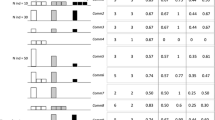Abstract
The prevailing terminological confusion around the concept ‘diversity’ has hampered accurate communication and caused diversity issues to appear unnecessarily complicated. In fact, a consistent terminology for phenomena related to (species) diversity is already available. When this terminology is adhered to, diversity emerges as an easily understood concept. It is important to differentiate between diversity itself and a diversity index: an index of something is just a surrogate for the thing itself. The conceptual problem of defining diversity also has to be separated from the practical problem of deciding how to adequately quantify diversity for a community of interest. In practice, diversity can be quantified for any dataset where units of observation (such as individuals) have been classified into types (such as species). All that needs to be known is what proportion of the observed units belong to a type of mean abundance. Diversity equals the inverse of this mean, and it quantifies the effective number of the types of interest. In ecology, interest often (but not always) focuses on species diversity. If the dataset consists of (or gets divided into) subunits, then the total effective number of species (gamma diversity) can be partitioned into the effective number of compositionally distinct subunits (beta diversity) and the mean effective number of species per such subunit (alpha diversity). Species richness is related to species diversity, but they are not the same thing; richness does not take the proportional abundances into account and is therefore the actual—rather than the effective—number of types. Most of the phenomena that have been called ‘beta diversity’ in the past do not quantify an effective number of types, so they should be referred to by names other than ‘diversity’ (for example, species turnover or differentiation).
Similar content being viewed by others
References
Beck J, Schwanghart W (2010) Comparing measures of species diversity from incomplete inventories: an update. Methods Ecol Evol 1:38–44
Hill MO (1973) Diversity and evenness: a unifying notation and its consequences. Ecology 54:427–432
Jost L (2006) Entropy and diversity. Oikos 113:363–375
Jost L (2007) Partitioning diversity into independent alpha and beta components. Ecology 88:2427–2439
Jost L (2009) Mismeasuring biological diversity: response to Hoffmann and Hoffmann (2008). Ecol Econ 68:925–992
Jurasinski G, Retzer V, Beierkuhnlein C (2009) Inventory, differentiation, and proportional diversity: a consistent terminology for quantifying species diversity. Oecologia 159:15–26
Lande R (1996) Statistics and partitioning of species diversity, and similarity among multiple communities. Oikos 76:5–13
MacArthur RH (1964) Environmental factors affecting bird species diversity. Am Nat 98:387–397
MacArthur RH (1965) Patterns of species diversity. Biol Rev 40:510–533
Magurran AE (2004) Measuring biological diversity. Blackwell, Oxford
Moreno CE, Rodríguez P (2010) A consistent terminology for quantifying species diversity? Oecologia 163:279–282
Routledge RD (1977) On Whittaker’s components of diversity. Ecology 58:1120–1127
Routledge RD (1979) Diversity indices: which ones are admissible? J Theor Biol 76:503–515
Shmida A, Wilson MV (1985) Biological determinants of species diversity. J Biogeogr 12:1–20
Tuomisto H (2010a) A diversity of beta diversities: straightening up a concept gone awry. Part 1. Defining beta diversity as a function of alpha and gamma diversity. Ecography 33:2–22
Tuomisto H (2010b) A diversity of beta diversities: straightening up a concept gone awry. Part 2. Quantifying beta diversity and related phenomena. Ecography 33:23–45
Whittaker RH (1960) Vegetation of the Siskiyou Mountains, Oregon and California. Ecol Monogr 30:279–338
Whittaker RH (1977) Evolution of species diversity in land communities. Evol Biol 10:1–67
Acknowledgments
I thank many colleagues for inspiring discussions on diversity, especially Kalle Ruokolainen, Lou Jost, Robert K. Colwell, Mirkka Jones, Jari Oksanen and Teemu Tahvanainen. Kalle Ruokolainen, Lou Jost, Mark V. Wilson and an anonymous reviewer gave useful comments on the manuscript. All thought experiments performed in this paper comply with the current laws of the countries visited while contemplating diversity.
Author information
Authors and Affiliations
Corresponding author
Additional information
Communicated by Scott Collins.
Rights and permissions
About this article
Cite this article
Tuomisto, H. A consistent terminology for quantifying species diversity? Yes, it does exist. Oecologia 164, 853–860 (2010). https://doi.org/10.1007/s00442-010-1812-0
Received:
Accepted:
Published:
Issue Date:
DOI: https://doi.org/10.1007/s00442-010-1812-0




